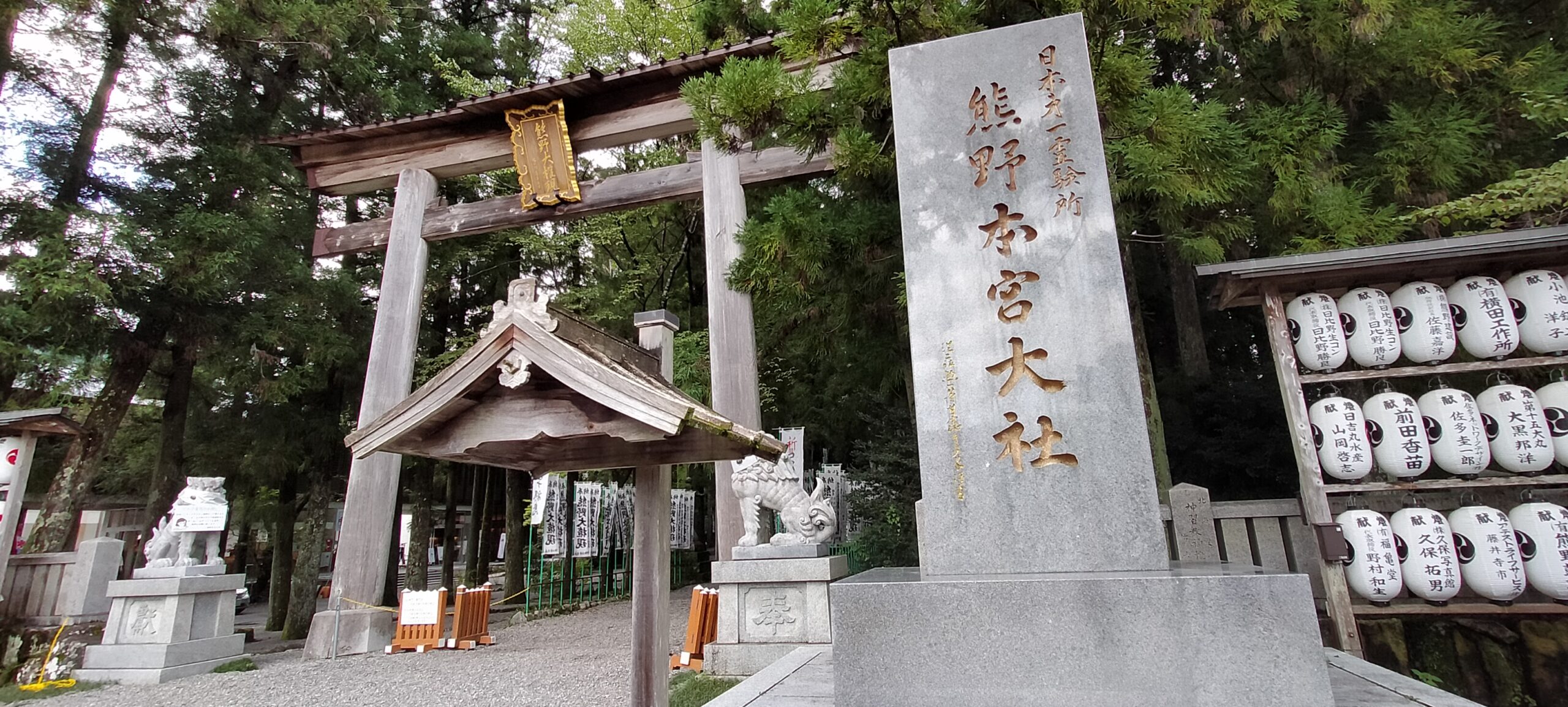There are three shrines in Kumano area, Kumano Hongu Taisha Shrine, Kumano Hayatama Taisha Shrine and Kumano Nachi Taisha Shrine.
Again, Kumano area is a power spot.
Kumano Hongu Taisha Shrine is the main shrine of those three shrines. There are many Kumano Shrines in Japan in other areas and this shrine is the grand head shrine of Kumano Shrines and people call this shrine Kumano Daigongen. The chief god is Ketsu-Mikono-Ookami or Susano-no-Mikoto who is the god controls trees. In the past, Wakayama Prefecture was called as Ki-no-Kuni means the province of trees.
During the period of the 10th generation, Emperor Sujin, Kumano Hongu Taisha Shrine was built and the religious ceremony for appeasing the gods was performed.
From the Nara period, monks who walk in the field or mountains and practice asceticism often came to this shrine and practiced. Therefore, the power of the gods were well known by many people in Japan.
About a thousand years ago, Cloistered Emperor Uda did an imperial visit to this shrine and then for about three hundred years, many cloistered emperors, retired emperors and imperial princesses visited this shrine over a hundred times in total. This is known as Kumano Imperial Visits.
Then, by syncretization of Shinto with Buddhism, the chief god is also considered as Amitabha Tathagata and many people visited this shrine to get miraculous virtue. Pilgrimages to the Kumano three shrines in particular became popular and many ordinary people visited them; the spectacle of their advancing on a narrow mountain trail in a row was called “Ari no Kumano Moude” which means ants pilgrimages to the Kumano three shrines. Also, people said if you don’t visit Ise Jungu Shrine more than seven times or don’t visit Kumano more than three times, it is not enough. More than five thousands of the Kumano Shrines in all over Japan were spun off from Kumano Hongu Taisha Shrine.
When you have a chance to visit Kumano area, this is a spot you should visit.




Comments